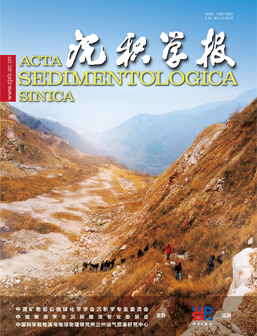Is the strike-slip convergence the cause of the Kwangsian Orogeny in South China?
doi: 10.14027/j.issn.1000-0550.2023.122
- Received Date: 2023-07-20
- Available Online: 2023-12-18
-
Key words:
- Kwangsian Orogeny /
- provenance analysis /
- detrital multi-minerals U-Pb geochronology /
- paleogeographic reconstructions /
- South China
Abstract: [Objective] The southeastern part of South China underwent a strong orogenic process, known as the Kwangsian Orogeny, during the Early Paleozoic period. However, there is still considerable controversy surrounding the nature of Kwangsian Orogeny. In order to understand the geodynamic mechanism of the Early Paleozoic Kwangsian Orogeny of South China, the detrital multi-minerals U-Pb geochronology is used to reconstruct the paleogeographic position of the Yangtze and Cathaysia blocks in Early Paleozoic and restore the relative displacement of terranes. [Methods] U-Pb geochronology and hafnium isotopic data of detrital zircon and detrital monazite from Early Paleozoic strata of South China are revisited to trace the potential sources. [Results and Discussions] The results show that: (1) Detrital zircons from the Cambrian to Ordovician strata in Western Yangtze yield predominantly age peaks at 850-750 Ma and 550-500 Ma, with minor age peaks at 1 000-900 Ma, 1 900-1 800 Ma and 2 550-2 400 Ma. In combination with the regional lithofacies evolution, provenance analysis demonstrates that the abundant 550-500 Ma detrital zircons with positive εHf(t) values reflecting a large involvement of juvenile crustal materials, were probably derived exotically from the Cadomian arc belt along the Iran-Turkey margin. The Neoproterozoic detrital zircons preserved in the Cambrian to Ordovician strata of the western margin of the Yangtze Block are mainly derived from the Neoproterozoic igneous rock in the western Yangtze Block and the recycled materials from the underlying Neoproterozoic strata in Western Yangtze. Provenance analysis reveals that the Yangtze Block and Iran have a close provenance linkage; (2) U-Pb ages of detrital zircon and detrital monazite from the Cambrian to Ordovician strata in the Cathaysia Block exhibit predominantly age peaks at 1 000-900 Ma and 550-500 Ma. The former aligns with the age of the magmatic and metamorphic zircon/monazite in the East Ghats belt of NE India and Rayner belt in East Antarctic, while the latter corresponds to the U-Pb ages of the zircon and monazite from the Kuunga Orogen in NE India, and (3) In the age spectra of the Silurian succession of southeastern Yangtze, the peaks older than 440 Ma are identical to those of the pre-Silurian strata, indicating that the provenance of detritus of those ages is mainly the recycled materials from the underlying Cambrian to Ordovician strata. The age peak of 460-410 Ma coincides with the timing of the massive 440?400 Ma Syn-orogenic granites in Cathaysia Block. [Conclusions] The result of provenance analysis favors an oblique distribution of the Yangtze and Cathaysia blocks along the northeastern margin of East Gondwana. The Yangtze Block, specifically, was situated in the northeast of Iran, while Cathaysia occupied the northeastern margin of India during the Cambrian to Ordovician period, respectively. It is crucial to note that the Kwangsian Orogeny is an oblique strike-slip convergence triggered by the final assembly of the supercontinent Gondwana during the late Neoproterozoic to Cambrian period. The oblique strike-slip convergence of the Yangtze and Cathaysia blocks after the late Ordovician (~460 Ma) resulted in the formation of the Wuyi-Yunkai Orogenic Belt (460-420 Ma).
| Citation: | Is the strike-slip convergence the cause of the Kwangsian Orogeny in South China?[J]. Acta Sedimentologica Sinica. doi: 10.14027/j.issn.1000-0550.2023.122 |






 DownLoad:
DownLoad: